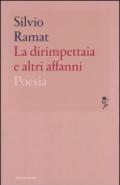
Tempo e sincronicità. Tessere il tempo
Tagliagambe Silvano,
Malinconico Angelo
Tempo e sincronicità. Tessere il tempo: "Il tempo è il nostro supplizio. L'uomo cerca solo di sfuggirvi, cioè cerca di sfuggire al passato e al futuro sprofondando nel presente oppure di fabbricarsi un passato e un futuro a modo suo". Questa riflessione di Simone Weil pone un problema oggi dibattuto dalla fisica e dalle neuroscienze, ma già al centro dell'attenzione di Pauli nel suo dialogo con Jung. La questione in gioco non è quella del significato del tempo, bensì quella, solo apparentemente analoga, del rapporto tra tempo e significato nel quale, secondo Pauli, la connessione di significato è l'agente primario e il tempo un prodotto secondario. È allora evidente che la sincronicità non può essere confusa con il sincronismo, cioè con la simultaneità nell'accadere. Si tratta di un fenomeno ben più complesso a cui si deve l'unità dei contenuti della coscienza e che non presuppone neppure la coincidenza nel tempo, tanto che Pauli può scrivere a Jung: "Lei impiega il termine 'sincrono' anche se tra il sogno e l'evento esteriore intercorrono due, tre mesi". Qual è allora il significato della sincronicità e quale la sua relazione con il tempo? Questa la domanda cruciale sulla quale il libro s'interroga, percorrendo i sentieri della fisica, della neurobiologia, della letteratura e dell'arte. "Time is our torture. The man just tries to escape from it, i.e. tries to escape the past and the future a past and present or sinking into a future making his way ". This reflection of Simone Weil poses a problem today debated by physics and neuroscience, but already in the spotlight by Pauli in his dialogue with Jung. The issue at stake is not the meaning of time, but, only apparently similar, of the relationship between time and meaning where, according to Pauli, meaning access is the primary agent and time a byproduct. It is then obvious that synchronicity may not be confounded with the timing, that is, with simultaneity in the happening. This is a much more complex phenomenon that you have contents of consciousness and unity that does not presuppose any coincidence in time, so that You can write to Jung: "Pauli employs the term ' synchronous ' though between the dream and the outer event exist two or three months. " What then is the meaning of synchronicity and what its relationship with time? This is the crucial question on which the book is uncertain, along the paths of physics, Neurobiology, literature and art.
Disponibile in 5 giorni lavorativi Ordina libro
Dettagli Libro
- Titolo: Tempo e sincronicità. Tessere il tempo
- Autore: Tagliagambe Silvano, Malinconico Angelo
- Curatore:
- Traduttore:
- Illustratore:
- Editore: Mimesis
- Collana: FILOSOFIE
- Data di Pubblicazione: 2018
- Pagine: 197
- Formato:
- ISBN: 9788857548869
- Non catalogati - Non catalogati
Libri che ti potrebbero interessare

Uomini da preda
Aldo Squillari

Mangiare naturale e vegetariano. Consigl...
Rossi Romina

Immagini, parole, voci
Andrea Sormano

La dirimpettaia e altri affanni
Silvio Ramat

La nostra ultima estate. Ediz. speciale
C. McGilvray, Elin Hilderbrand

Papa Francesco. La vita e le sfide
Saverio Gaeta

La «Clavis physicae» (316-529) di Hono...
Pasquale Arfé

Le forme della cittadinanza. Tra cittadi...
Pietro Gargiulo, Laura Montanari

Oceania boulevard
Marco Galli









